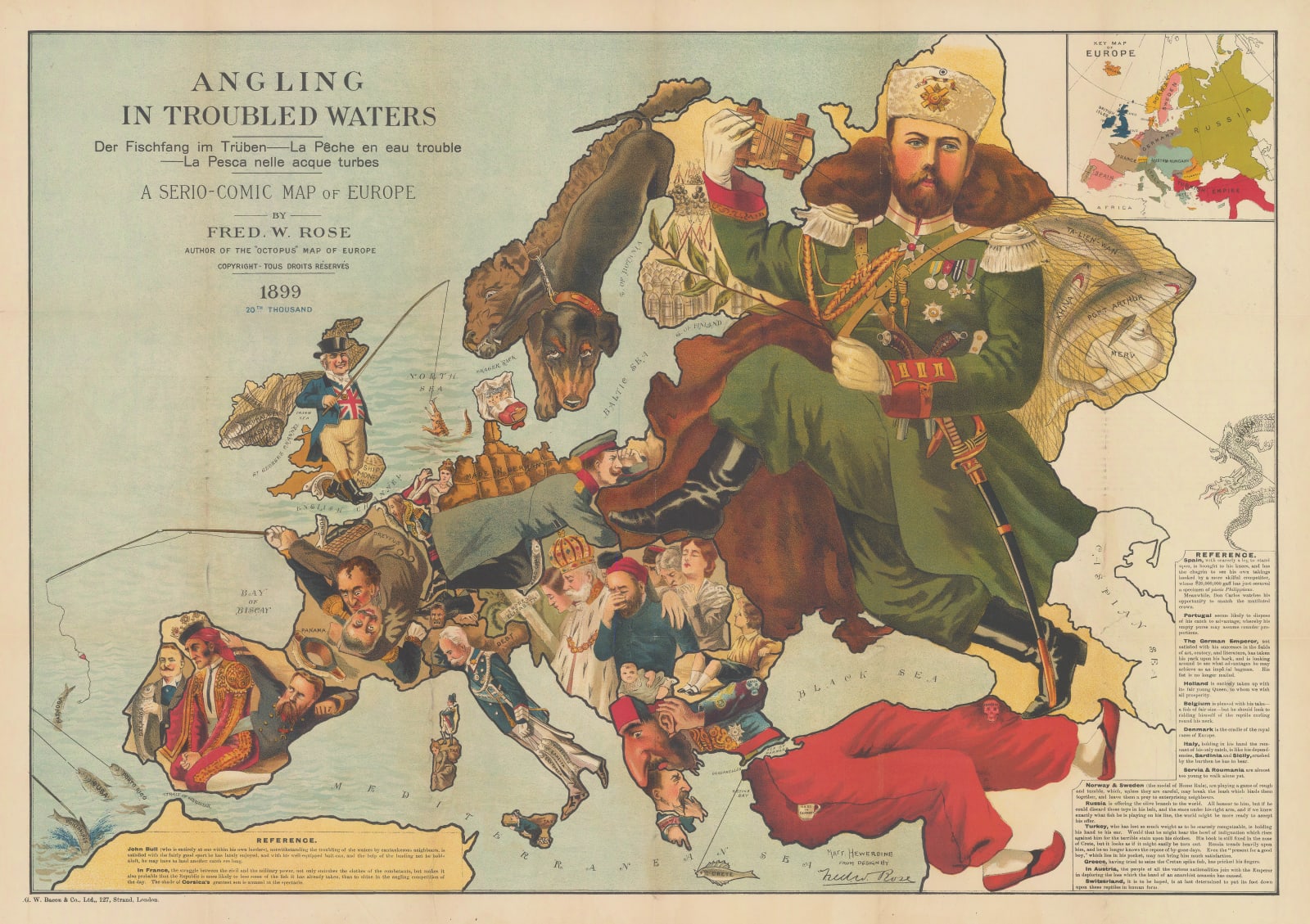Frederick W. Rose
72 x 50 cm
Frederick Rose is the best known artist of a group of satirists using maps to illustrate the fraught political landscape of mid to late 19th century Europe. Although his best known work was the "Serio Comic Map of Europe" published in 1877, he produced several other iconic images on the same subject.
"Angling in Troubled Waters" is one of the more colourful and spectacular maps of his portfolio and focuses on the most recent political developments on the continent, with particular emphasis on colonial activities. This is represented by the individual countries, shown as exaggerated caricatures of either famous figures of the day or national representations, casting fishing lines into the sea.
As with all political satire, much of what is shown on the map refers to specific incidents of the time but several of these have stood the test of history and are still referenced today.
Great Britain is represented by the generic John Bull and is universally regarded as very wealthy. However, hooked on a mere fishing line is a rather dangerous looking crocodile representing Egypt. This is a reference to the Mahdist War, nominally between Egypt and the forces of the Sudanese Mahdi but in reality, the former were dependent upon English forces for their recent victory in 1899.
Spain can be seen as ruing the loss of many of their last colonies, Puerto Rico, the Philippines and Cuba, which they had just lost in the disastrous Spanish American War of 1898-99. France is locked in a struggle between the State and the military with a reference to the notorious Dreyfus Affair while at the same time, their broken fishing pole has hooked a fish named Fashoda, a reference to the Fashoda incident, where they tried and failed to seize control of the White Nile. There is also a reference to the enormous cost of the Panama Canal.
Vast Russia, a perennial favourite menace on Rose maps, shows the Czar holding the olive branch of peace while casting his fishing pole to the Far East, mainly China; this is a reference to Russian diplomatic activities in Manchuria and Korea which they pursued with great success, gaining access to Port Arthur as well as several important railway concessions. The Czar is also seen discreetly building up munitions in the interior of the country, particularly Finland.
Other references include an impoverished Italy holding onto their East African colonies, a hugely diminished Ottoman Empire, with secretive skulls in the interior hinting at internal atrocities but with one last Mediterranean possession, Crete. The Balkans are shown as mourning the Empress Elizabeth of Austria, the much loved wife of Emperor Franz Josef I, who was killed by an Italian anarchist in 1898.
Rose also adds several text panels with notes and admonitions to various countries as well as a more orthodox inset of a map of Europe on the upper right corner. Finally, the credit for the piece is shared with the illustrator Matthew B. Hewerdine, a frequent collaborator of Rose for his later maps.
As with most of Rose's work, this map was wildly popular and a bestseller in its day. However, as it was issued separately, usually either linen backed or just a folding piece of paper within illustrated wrappers, it is not common on the market.
Printed colour. [EUR1548]


